15 Shades of Green: Little-Known Leafy Vegetables of India You Need To Try!
Apart from the usual suspects such as palak, methi and chaulai, few people know about the rich culinary repertoire of local and seasonal edible greens that grow across India.

“An eminent doctor told me that proper use of green leaves could revolutionize the customary notions of food. That, of course, means elaborate research and examination of the nourishing properties of the innumerable leaves that are to be found hidden among the grasses that grow wild in India.” – Mahatma Gandhi.
Spinach (palak), fenugreek (methi), amaranth (chaulai) and mustard greens (sarson) are leafy greens — or saag as they are commonly called — that we have grown up with. And you have probably heard ballads about the many benefits of kale and chard.
After all, it is a universally acknowledged food fact that leafy green vegetables are among nature’s best nutrition supplements They come packed with iron, calcium, vitamins, antioxidants and fibre, and are vital components of a healthy, balanced diet.
Yet, apart from these usual ubiquitous suspects, few people know about the rich culinary repertoire of local and seasonal edible greens that grow across India. From treating common ailments to adding variety to a simple diet, these indigenous superfoods have been consumed in rural Indian for centuries.
So if you’re looking to infuse some fresh flavours into your daily diet, here are 15 delicious (and extremely nutritious) leafy greens that you might be walking past at the vegetable market without even realizing what you’re missing!
1. Bichu Buti

Stinging Nettle, also known as sisunaak saag or bichu buti, is a perennial plant which grows wild throughout the Himalayan region of India. According to folklore, a broth made of nettle leaves was the only food consumed by the renown Tibetan mystic Milarepa during his weeks-long retreat in the forest.
Once touched, this unusual plant can give you an itch and rashes that last for a couple of hours. Once cooked, though, it doesn’t sting the palate in the least. Rich in natural fibres, this super nutritious plant has been traditionally used as a natural diuretic, laxative and allergy relief remedy. It’s also proven to benefit skin, bone and urinary health as well.
2. Haldi Patta
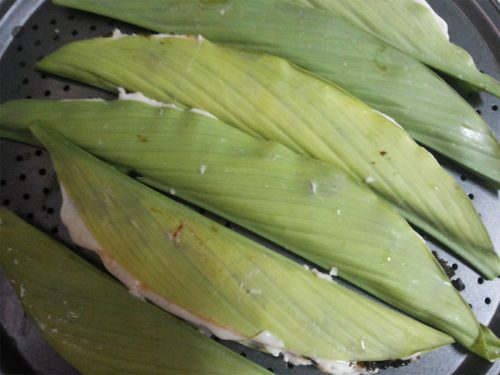
Did you know that you can use the leaves of the turmeric plant in your cooking? In the coastal regions of India, turmeric leaves are traditionally used to make herbal concoctions to ward off cold, fever and other respiratory allergies. During the monsoon months in Goa, turmeric leaves are used to make a rice dish called Patoli.
A paste of rice flour and water is smeared on the leaf. Then a sweet mixture of grated coconut, jaggery, and powdered cinnamon is spread in the centre, after which the leaf is folded and placed in a steamer. Steaming allows the leaf’s aroma to intensify and the plant’s anti-bacterial and anti-fungal properties to seep into the stuffing.
If you found our stories insightful, informative, or even just enjoyable, we invite you to consider making a voluntary payment to support the work we do at The Better India. Your contribution helps us continue producing quality content that educates, inspires, and drives positive change.
Choose one of the payment options below for your contribution-
By paying for the stories you value, you directly contribute to sustaining our efforts focused on making a difference in the world. Together, let’s ensure that impactful stories continue to be told and shared, enriching lives and communities alike.
Thank you for your support. Here are some frequently asked questions you might find helpful to know why you are contributing?


3. Lingru
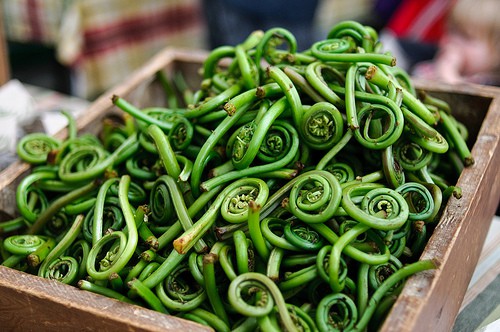
While not technically a green leafy vegetable, the lingaru or fiddlehead fern is a widely consumed saag in Uttarakhand and Himachal Pradesh, where it grows abundantly in the wild. The locals of Uttarakhand, cook it into a curd-based curry, while in the Kullu valley it is mostly consumed as a pickle.
These tender, half-curled fronds are also a much-loved delicacy in Assam, where it is called dhekia xaak. Nutritionally dense, lingaru has a delicate flavour and a distinctive nutrition profile comprising of antioxidants, omega-3 essential fatty acids, and a multitude of vitamins.
4. Pui Saag

There is some truth to the secret behind Popeye the Sailor’s remarkable strength. The comic hero routinely energized himself with a can of spinach before every fight and ended up saving the world. And this holds true not just for the regular spinach, but for the lesser-known Malabar spinach too!
This perennial plant (also called basale soppu in Kannada and pui saag in Bengali) is a stealthy climber with nutritious leaves and several health benefits. Very low in calories (100 grams of raw leaves provide just 19 calories) and rich in fibre, these leaves facilitate digestion, reduce cholesterol absorption, enhance immunity and encourage cellular healing.
5. Saijan Saag

If plants could be superheroes, Moringa (adapted from the Tamil and Malayalam word for drumstick) would definitely be one of them. Every part of this ubiquitous tree can be consumed — leaves and young fruits (pods) as food; and the seeds, bark, flowers, and roots as medicine.
Also known as saijan saag, the leaves especially are highly nutritious. Once harvested and dried, they contain 30% protein, all essential amino acids, and have abundant levels of anti-oxidants, vitamins and minerals. Unsurprisingly, it has long been used in India as a traditional remedy for many ailments such as diabetes, heart disease, anaemia, arthritis, liver disease, and respiratory, skin, and digestive disorders.
You May Like: Loved By Fidel Castro, This Indian Tree is Helping Fight Climate Change in Africa’s Maghreb!
6. Gongura
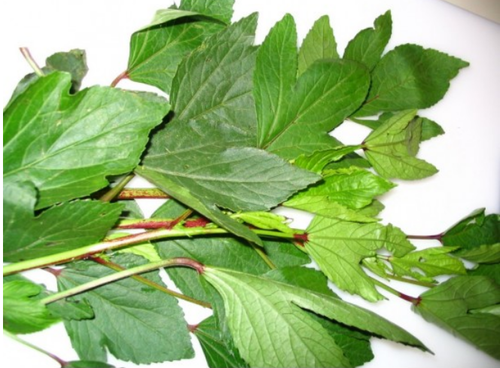
Known as gongura in Telugu, ambadi in Marathi, pulicha keerai in Tamil and pundi in Karnataka, the sorrel plant is called pitwaa in Hindi, khata palanga in Oriya, tenga mora in Assamese and mestapat in Bengali. This basically goes to show just how widely these naturally sour leaves are consumed in India.
The reason being that this leafy green is an incredibly rich source of iron, vitamins, minerals, folic acid and anti-oxidants essential for human nutrition. A fresh bunch of gongura is the only key to making the right dish, the popular ones being a deliciously tangy mutton curry, a zesty toor dal and a spicy pickle-like condiment. Interestingly, the sourness of the leaves is directly proportional to the temperature of the region it is grown in!
7. Kulfa Saag

Purslane ( also called kulfa, ghol or luni saag) is one of those summer leafy green vegetables that is highly underrated not just in taste, but also in health benefits. In India, physicians have long been recommending it for everything from reducing fever, removing worms and soothing urinary infections. In fact, it was a favourite of Mahatma Gandhi, who also wrote about it in his magazine.
Modern science too has made clear why it is of such value: apart from providing significant amounts of vitamins A, B and C. and decent amounts of protein, this leafy green probably contains more Omega-3 fatty acids than any other commonly available vegetable source. Interestingly, most botanical studies credit India as its country of origin, and Euell Gibbons, the American expert on wild food, has even labelled it “India’s gift to the world.”
8. Anne Soppu
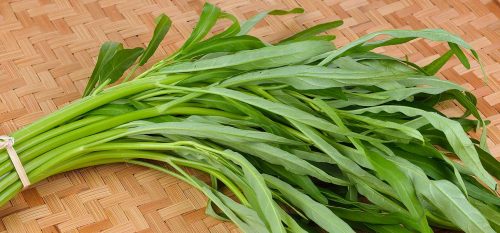
Called anne soppu in Karnataka and kalmi saag in West Bengal, water spinach grows wild, like a weed along river banks and in paddy fields. Its mild, yet distinctly savoury taste, combination of long arrow-shaped leaves and crunchy hollow stems, along with great protein and nutrient content makes it an extremely satisfying culinary ingredient
In Bengal, its stir-fried with garlic, green chillies and gram while in Karnataka, the same leaves are made into a delicious sweet-sour-spicy chutney with urad dal. Interestingly, this hardy weed is said to have sustained many lives during World War II in Japanese-occupied Singapore and during the Great Bengal Famine of 1943-44!
9. Arbi ka Patta
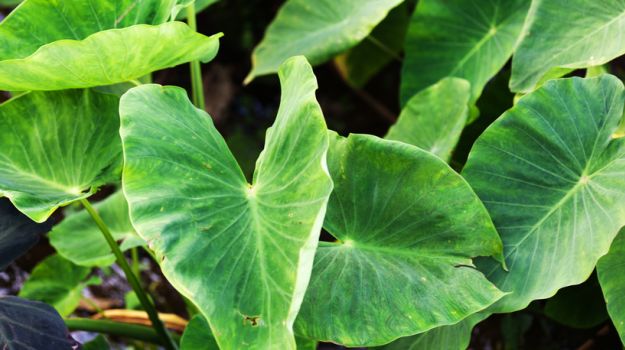
The potato-resembling roots of arbi or colocasia is a well-known ingredient in most Indian households. But did you know that the jumbo heart-shaped leaves of this herbaceous plant are delicious as well? Not only this, it also packed with a multitude of essential nutrients.
In fact, several indigenous cuisines across India, especially in Bihar, Jharkhand, Bengal, Uttar Pradesh, Uttarakhand and Himachal Pradesh, have traditional dishes prepared with arbi ka patta (also called saru saag or taro leaves). From patrod (a spicy besan mix is slathered over these leaves, which are then rolled, steamed and fried) to a south Indian-style curry with coconut milk, the culinary variations on this saag are manifold, thanks to its robust flavour.
Also Read: 15 Rare Indian Fruits That Will Amaze You With Their Uniqueness
10. Imli ka Patta

With few urban citizens knowing how wonderful they can be, tamarind leaves (commonly known as imli ka patta) are often ignored or thrown away in favour of the tree’s tangy fruits. These tender leaves have a tart flavour thanks to an abundance of Vitamin C. They are also known to be rich in fibre, potassium, iron and calcium.
In several south Indian villages, dishes like curries, chutneys and rasams are often incomplete without a crackling tempering of tamarind leaves. In fact, a unique chutney called chintachiguru pachadi is made in Andhra Pradesh by grinding tamarind leaves (fresh or sun-dried) with peanuts, garlic, dried red chillies, and cumin seeds.
11. Chakramarda Saag
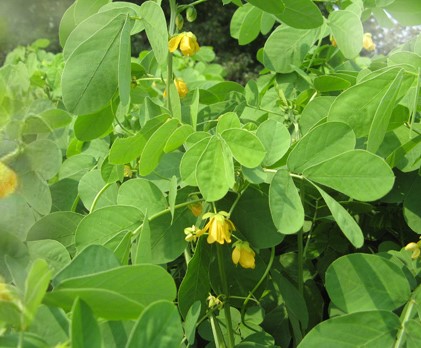
Also known as chakod, chakunda or chakramarda saag, the cassia tora plant grows wild like a weed, spreading like a lush carpet during the monsoons in the forested areas of Bihar, Jharkhand, Chhattisgarh, and in the coastal belt of Karnataka and Goa. It is eaten as a vada (lentil fritter), as a vegetable mix with dried coconut and jackfruit seeds, and as a simple stir-fry served with finger-millet bhakri.
Very rich in iron and micro-nutrients like zinc, it is considered a great way of boosting the haemoglobin count. It is also an excellent toxin remover and aids the treatment of malaria, skin inflammation and other dermal diseases such as ringworm, itching and psoriasis.
12. Haak

A popular local delicacy in Jammu and Kashmir, haak is a much-relished staple. Collard greens, as haak is known in English, are crinkly leaves with a green-blue hue that look quite a lot like spinach. However, this leafy vegetable is actually much more similar to cabbage and has a distinctive pungent flavour.
In Kashmir, haak is savoured in different textures — boiled, fried and mashed. While a stir-fry with mustard oil, asafoetida and chilli is a much-relished delicacy, the boiled version (known as the sewe haak) is a nourishing dish usually consumed by locals when suffering from respiratory illnesses such as bronchitis, asthma and whooping cough. It is also known to be an effective digestive aid.
13. Sushni Saag
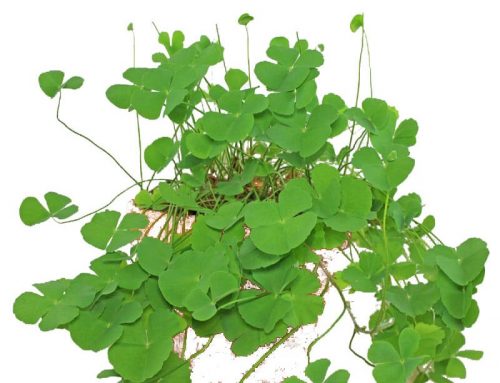
Known as sunsuniya saag or sushni saag, this aquatic plant look like clover but is actually a type of miniature fern. Its leaves are widely used in different traditional and folk medicinal systems for its curative value and is recommended for the treatment of insomnia, hypertension, diarrhoea, respiratory diseases, and skin diseases.
Widely consumed in West Bengal, Odisha, Chhattisgarh, Bihar and Jharkhand, it is mostly cooked with mustard oil and simple spices as a dry bhaji or a chutney. Interestingly, the fact that this saag has spawned the hit Bhojpuri song Kharo Khet Me Sunsuniya Guinya is indicative of its immense popularity in the region.
14. Takla
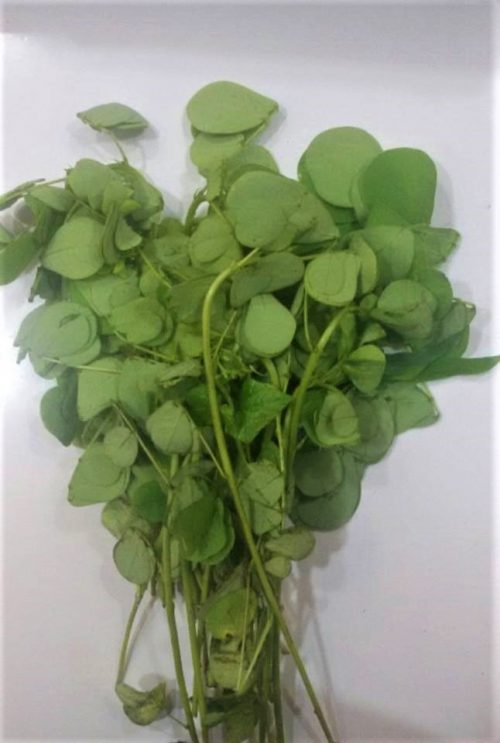
Photo Source
As the first showers of the monsoon season in Maharashtra, the takla saag makes its way from forests or green patches around the tribal hamlets of Yeoor Hills to city markets. From mid-June till the last week of September, until the rains, these seasonal leafy vegetable grows in the wild.
A powerhouse of minerals, vitamins and natural anti-oxidants, takla saag is extremely beneficial for health and has great medicinal value in keeping monsoon-related illnesses at bay. The locals often consume them raw in salads, slightly cooked such as a quick garlic-and-cumin flavoured saute or as a simple and spicy tamboli (coconut chutney).
15. Gotu Kola

A versatile medicinal plant that has been traditionally used in India for centuries, Indian pennywort is also known as gotu kola, brahmi, vallarai keerai, mandukaparni and manimuni saag. It is also called beng saag — a name inspired by baeng (the Bengali word for frog), for the chorus of frogs announcing the rains coincides with the appearance of this edible green.
Exceptionally rich in iron and dietary fibre, this powerful has many health benefits, from healing wounds and treating varicose veins to easing anxiety and enhancing memory power. In several India kitchens, these leaves (that have a mildly pungent taste with a hint of methi-like bitterness) are incorporated into lentil curries, coconut-based gravies and seafood stews.
Also Read: Super Greens — How to Grow Nature’s Own Super Food at Home
Like this story? Or have something to share? Write to us: [email protected], or connect with us on Facebook and Twitter.
NEW: Click here to get positive news on WhatsApp!
This story made me
-
97
-
121
-
89
-
167













